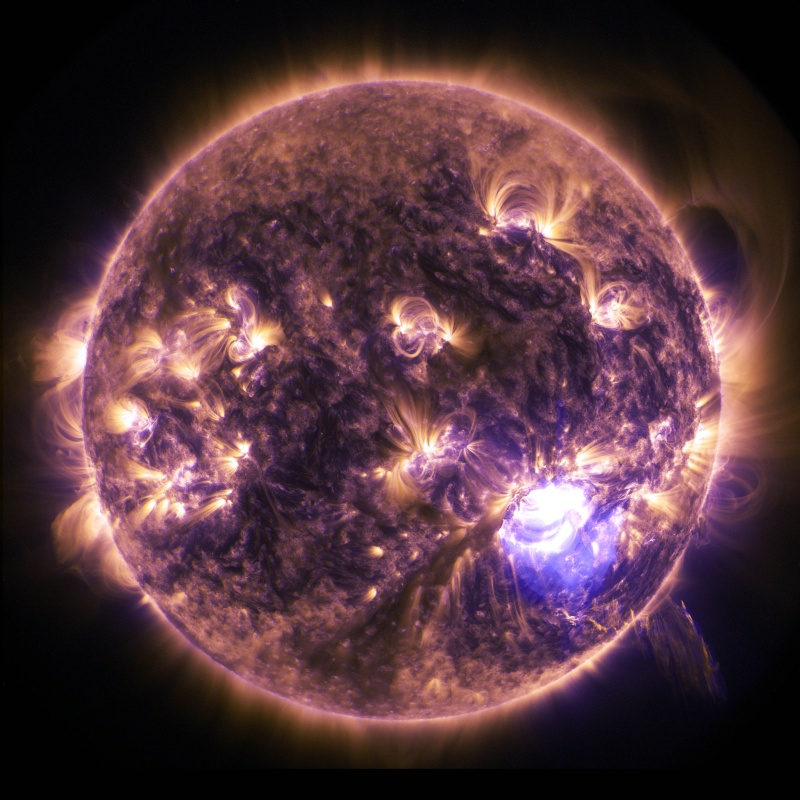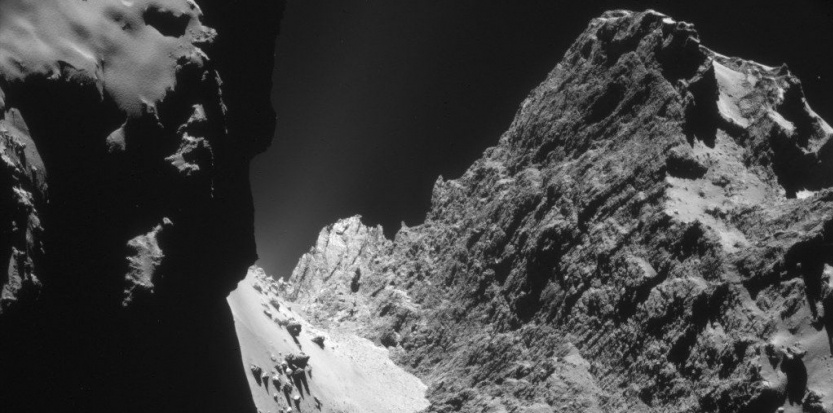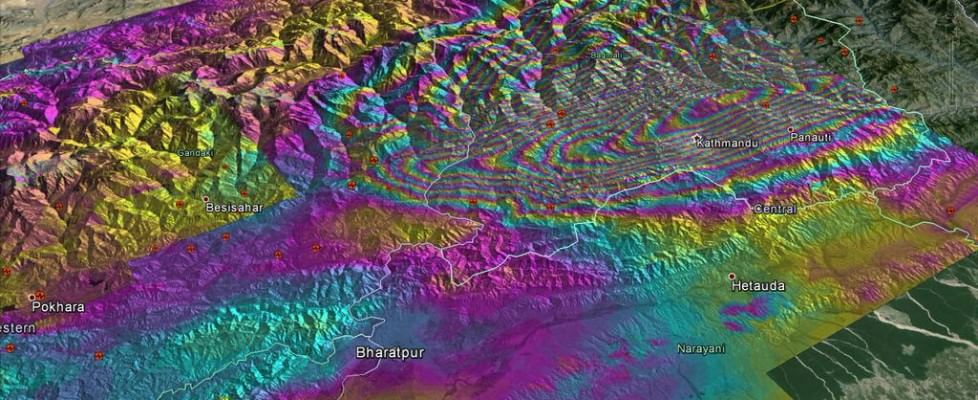 par Laurent Simon Lun 17 Oct 2016 - 1:57
par Laurent Simon Lun 17 Oct 2016 - 1:57
Des vidéos, sur ExoMars 2016,
sur le site de l'ESA,
ou :http://livestream.com/ESA/marsarrival
ExoMars separation confirmation
At the end of this live webcast, at about 17:30 CEST on 16 October, the data link with the ExoMars/TGO orbiter had still not been fully re-established following separation. Subsequently, at around 18:40 CEST, ESA re-established a full data link with the spacecraft, and the mission control team could confirm that separation had taken place as planned, at 16:42 CEST. Both the Schiaparelli module and the TGO orbiter are in good shape and en route - seperately - to arrive at the Red Planet on 19 October.
et :
http://www.esa.int/Our_Activities/Space_Science/ExoMars/Live_updates_ExoMars_arrival_and_landing
13 October 2016
Updates from ESA’s space operations centre as the ExoMars Trace Gas Orbiter approaches and enters orbit around the Red Planet, and the Schiaparelli module lands on its surface
Updates on this page will cover the following expected milestones:
14 October: TGO final trajectory manoeuvre (08:45 GMT)
16 October: Separation of Schiaparelli from TGO at 14:42 GMT / 16:42 CEST
17 October: TGO orbit-raising manoeuvre at 02:42 GMT / 04:42 CEST
19 October: TGO Mars orbit insertion and Schiaparelli entry, descent and landing on Mars (atmospheric entry expected 14:42 GMT / 16:42 CEST, landing 14:48 GMT / 16:48 CEST)
20 October: Update on Schiaparelli status; descent images expected
21+ October: Schiaparelli status reports until end of mission
Note: Times shown above are actual event times at Mars; the one-way signal travel time between Earth and Mars is currently just under 10 minutes.
The events of 16, 19 and 20 October will also be livestreamed here, all other events will be reported on this page and via Twitter from @esaoperations, @ESA_ExoMars, @ESA_TGO and @ESA_EDM, and via the hashtag #ExoMars.
Mise à jour, au 16 octobre :
16 October
18:43 CEST: Full telemetry link with ExoMars/TGO has been restored via ESA's 35m deep-space ground station at Malargüe, Argentina.
18:30 CEST: The Schiaparelli module was released from the Trace Gas Orbiter (TGO) at 14:42 GMT (16:42 CEST) as planned.
Today, three days before gravity will ensure the arrival of ExoMars 2016 at Mars, the Schiaparelli Entry, Descent & landing demonstrator Module separated from the TGO orbiter and is now en route on a ballistic trajectory to reach the Red Planet, enter its atmosphere and land softly in an area close to the equator known as Meridiani Planum.
However, TGO unexpectedly did not return telemetry (on-board status information), and sent only its carrier signal, indicating it is operational. The anomaly that prevents TGO's telemetry from being sent is under investigation, and is expected to be resolved within the next few hours.
An update will be posted in the next few hours.
17:27 CEST: ExoMars Flight Director Michel Denis confirmed that separation of Schiaparelli has occurred and and signals from TGO have been reacquired. The signals do not contain the expected telemetry (information on the onboard status), and the teams are investigating the situation.
17:02 CEST: Flight dynamics team at ESOC confirms separation of Schiaparelli from TGO on the basis of Doppler signal from the carrier. The Giant Metrewave Radio Telescope (GMRT) near Pune, India, has also recorded a very faint signal that indicates separation. Official confirmation expected soon when telemetry from TGO is received.
16:42 CEST: According to the timeline, Schiaparelli should have separated from TGO. Confirmation is expected on Earth soon and will be announced by ExoMars Flight Director Michel Denis once the data is on ground.
15:50 CEST: Both Schiaparelli and ExoMars/TGO are in good shape! The A-team shift of the mission control team are now on console in Main Control Room at ESOC. ExoMars/TGO has completed its slew into separation attitude/orientation. Communication now provided by ESA's 35m deep-space tracking station at New Norcia, Australia. Separation on track for 16:42 CEST.
13:25 CEST: The separation timeline has started! Teams at ESOC are extremely busy monitoring the sequence of events scheduled for today's separation, expected at 16:42 CEST. Both the ExoMars/TGO orbiter and the Schiaparelli lander module are in great shape. The lander has been switched on and engineers monitoring telemetry - on-board status information - report that temperatures on Schiaparelli are nominal. ExoMars/TGO has already begun slewing - rotating in space - into the correct attitude for separation. Just prior to separation, at 16:31 CEST, mission controllers expect to lose the full data link with TGO, and then will follow progress by monitoring the basic unmodulated carrier signal only, as a sort of beacon. We may also see signals received via the GMRT radio telescope in Pune, India, although this is strictly an experiment and may not function as planned. One-way signal time today is 9 mins and 34 secs.
10:10 CEST: Today, Schiaparelli, still attached to ExoMars/TGO, is switched on, and its systems checked out one final time. Experts from Thales Alenia Space (Italy) working at ESOC will verify the final set of time-tagged commands, which have been uploaded via TGO and stored on board Schiaparelli so that it can function more or less autonomously throughout its mission. TGO will eject Schiaparelli at 16:42 CEST, dispatching it on a three-day coast and a six-minute descent to the surface. Ground station coverage will be provided by NASA's giant 70m Deep Space Network (DSN) ground stations at Canberra, Australia, and Madrid, Spain, which will listen for the spacecraft's signals as the Schiaparelli module separates. It will be pushed away from TGO at just 30 cm/second, but this tiny push can be detected by the DSN stations.
















 The European Space Agency’s Sentinel mission has completed its inaugural year.
The European Space Agency’s Sentinel mission has completed its inaugural year. 











